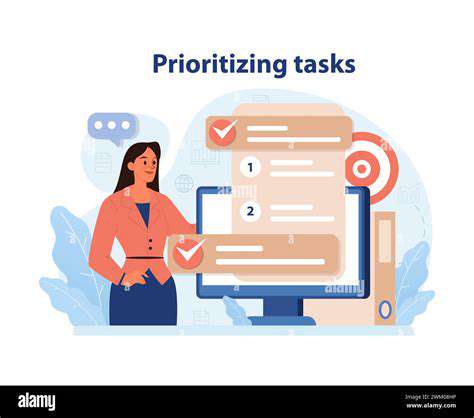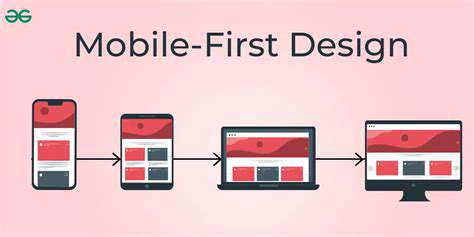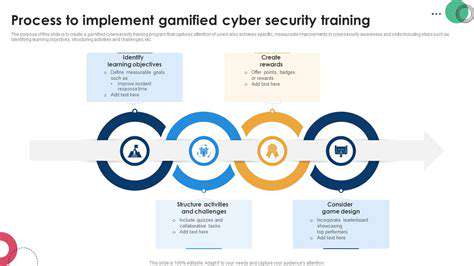Designing User Friendly Mobile Navigation

Optimizing for Touchscreen Interaction

Touchscreen-Friendly Design Principles
Designing for touchscreens requires a fundamental shift in perspective from traditional desktop interfaces. Users interact with touchscreens differently, relying on intuitive gestures and immediate feedback. This necessitates a focus on simplified navigation, clear visual hierarchy, and easily accessible controls. The goal is to create an experience that feels natural and effortless for the user, minimizing the cognitive load associated with figuring out how to interact with the interface.
A key principle is the use of large, easily tappable interactive elements. This reduces the chance of accidental selections and improves overall usability, particularly for users with differing dexterity levels or those using the device with one hand. Proper spacing between these elements also contributes to a more intuitive and user-friendly experience.
Intuitive Navigation and Gestures
Intuitive navigation is paramount for a positive touchscreen experience. Users should be able to easily understand how to move through the interface and find the information they need. Employing familiar navigation patterns, like tabs, menus, and swiping, can enhance the user's understanding and improve their overall interaction with the interface.
Implementing appropriate gestures, like pinch-to-zoom or swipe-to-navigate, can further streamline the user experience. Providing clear visual cues for these gestures is crucial for a seamless interaction. A well-designed gesture system will allow users to complete tasks efficiently and intuitively.
Visual Hierarchy and Accessibility
A clear visual hierarchy is essential to guide users through the content. Using contrasting colors, different font sizes, and visual emphasis techniques like borders and shadows will help users quickly scan the interface and locate important information.
Ensuring accessibility for users with disabilities is paramount. This includes providing sufficient color contrast between text and background, using alternative text for images, and designing for screen reader compatibility. These considerations not only improve the experience for users with disabilities but also enhance usability for all users.
Responsiveness and Performance
Touchscreen interfaces must be responsive and performant to provide a positive user experience. Slow loading times or unresponsive elements can lead to frustration and abandonment of the application. Optimizing for performance is crucial, particularly on devices with varying processing capabilities and network connections.
This includes efficient use of resources, careful optimization of images and animations, and ensuring the interface remains responsive during interactions. A fluid and responsive interface greatly enhances user satisfaction.
Content Optimization for Touchscreen
Content should be presented in a way that's optimized for the smaller screens commonly associated with touchscreen devices. This often involves condensing text, using concise language, and incorporating visual elements to convey information efficiently.
Images and videos should be optimized for fast loading times and easy viewing on smaller screens. Using high-quality images and videos that are appropriately sized and compressed is crucial to maintain a smooth user experience.
Testing and Iteration
Thorough testing is crucial to identify usability issues and areas for improvement. Testing with diverse user groups is essential to understand how different users interact with the interface and uncover potential pain points.
Collecting user feedback and iterating on the design based on this feedback is essential for creating a final product that meets the needs of the target audience. Continuous improvement through user feedback and testing is vital to the success of any touchscreen application.
Leveraging Mobile-First Design Principles

Prioritizing User Experience
A mobile-first design approach prioritizes the user experience on smaller screens first, ensuring a seamless and intuitive experience across all devices. This involves designing with mobile users in mind, considering factors like limited screen real estate, touch-based interactions, and potentially slower internet connections. By focusing on mobile first, designers can create a more consistent and user-friendly experience across the entire spectrum of devices, from smartphones to tablets and desktops.
This approach also compels designers to think carefully about the information architecture and navigation design, resulting in a more streamlined and efficient user flow. This emphasis on user-centered design directly translates to higher user engagement and satisfaction, ultimately boosting the success of the project.
Optimizing for Speed and Performance
Mobile-first design inherently demands exceptional performance. Slow-loading pages and unresponsive interactions are detrimental to user experience on mobile devices. This necessitates optimizing images, minimizing code, and leveraging caching strategies to ensure swift loading times. Careful attention to these details is crucial for maintaining user engagement and preventing bounce rates.
Mobile networks often have varying speeds and reliability. This underscores the importance of prioritizing load times. Developers should employ techniques like progressive enhancement to provide a functional experience even with limited network conditions. This focus on performance is critical, as it directly impacts user satisfaction and retention.
Responsive Design and Cross-Platform Compatibility
Responsive design is a cornerstone of mobile-first strategies, enabling websites and applications to adapt seamlessly to different screen sizes and orientations. This adaptability ensures a consistent and enjoyable experience for users across a variety of devices. Adapting to different screen sizes is crucial for creating a positive user experience that accommodates a wide range of devices.
Cross-platform compatibility is critical. The design must function flawlessly across various operating systems and browsers. This ensures accessibility and usability for a vast user base. Compatibility considerations directly impact usability and user acceptance.
Streamlined Information Architecture
Mobile-first design often mandates a simplification of information architecture. This involves prioritizing essential content and streamlining navigation to accommodate the limited screen real estate of mobile devices. A mobile-first design approach requires a more focused and concise presentation of information.
A well-structured information architecture ensures that users can easily find the information they need, regardless of the device they are using. This efficiency is crucial for positive user experiences. A well-thought-out structure translates directly into a positive user experience.
Accessibility and Inclusivity
Mobile-first design should prioritize accessibility for users with disabilities. This involves considering factors like screen readers, keyboard navigation, and alternative text for images. Designing for accessibility is not just a matter of compliance but a fundamental aspect of creating an inclusive experience. Accessibility features are vital to ensure that a wide range of users can interact with the design effectively.
Implementing accessibility features early in the design process is crucial for creating a positive and inclusive user experience for everyone. This includes careful consideration of color contrast, font sizes, and other visual cues. Careful attention to the needs of users with disabilities is essential for designing a truly inclusive product.
Cost-Effectiveness and Efficiency
Mobile-first design can lead to significant cost savings in the long run. By focusing on the most common use case, development efforts are optimized and resources are allocated effectively. This efficiency often results in reduced development time and lower maintenance costs.
Designers can streamline the development process by focusing on a streamlined experience, reducing the need for extensive adjustments later on. This strategy can translate to significant cost savings for the project overall.
Read more about Designing User Friendly Mobile Navigation
Hot Recommendations
- Attribution Modeling in Google Analytics: Credit Where It's Due
- Understanding Statistical Significance in A/B Testing
- Future Proofing Your Brand in the Digital Landscape
- Measuring CTV Ad Performance: Key Metrics
- Negative Keywords: Preventing Wasted Ad Spend
- Building Local Citations: Essential for Local SEO
- Responsive Design for Mobile Devices: A Practical Guide
- Mobile First Web Design: Ensuring a Seamless User Experience
- Understanding Your Competitors' Digital Marketing Strategies
- Google Display Network: Reaching a Broader Audience











